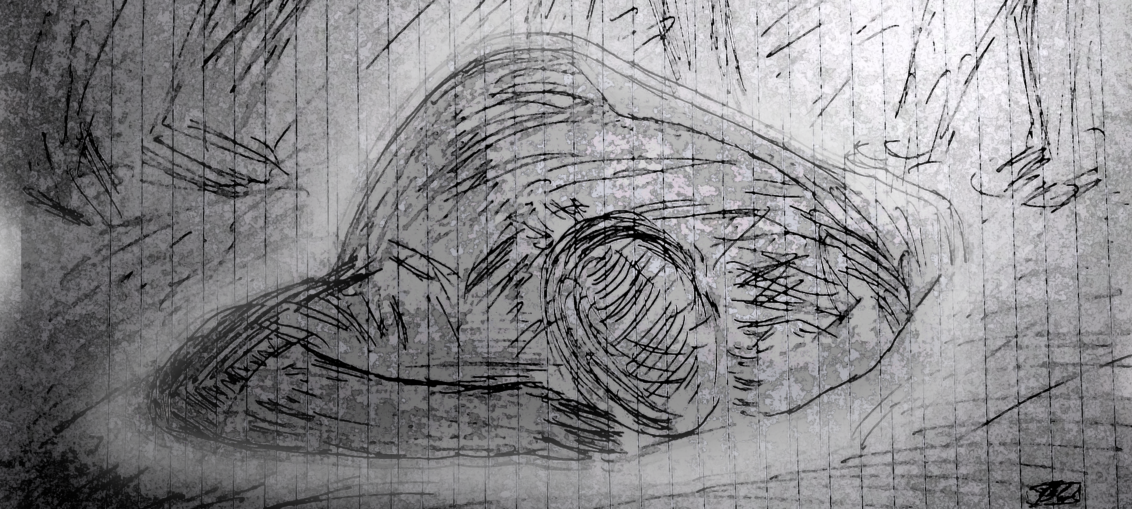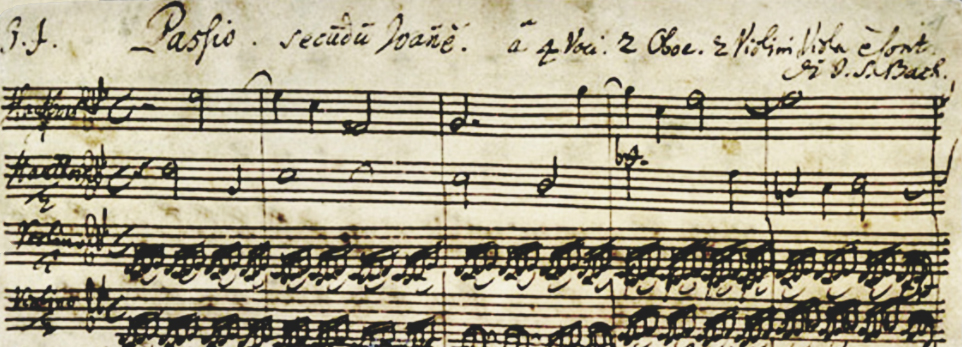Opera Review: Oratorio turned opera has powerful moments
Lyric Opera of the North unveiled their transformation of Johann Sebastian Bach’s “St. John Passion” from oratorio into opera Saturday night at the Lincoln Park Middle School auditorium. The intimacy and acoustics of the venue served both the singers and the musicians, making for a most unique experience.
An interesting aspect of this production was that chorus master Richard Robbins has the Twin Ports Choral Project downstage as a choir that is involved in the action, as when they badger and berate Pilate into sentencing Jesus to death, while upstage a larger special chorale chorus comments upon the action, bringing the divine perspective to the proceedings.
A quartet of stellar singers made their LOON debuts. Tenor William Ferguson’s Evangelist functions as the narrator, his clean and crisp voice telling the familiar tale. As Jesus, Jarrett Ott’s rich baritone resonated throughout the venue, investing everything he sang with an air of majesty, including the powerful moment when Jesus tells Pilate, “But my kingdom is not here.”
“St. John Passion” is sung in the original German, working from the original text, which is primarily Martin Luther’s translation of two chapters of the Gospel of John. A translation of the libretto is projected above the stage. The chorales and arias involve a lot of repetition, which gets repeated (a lot), so the screen is often blank.
By happenstance I screened the end of “City Lights” in class this week. Charlie Chaplin called his film a “pantomime” and it strikes me this is precisely the artistic approach stage director Robert Neu has taken with this production. With Chaplin pantomime is high art, and Neu crafts some compelling moments, as when the scourging of Jesus is represented by Ott writhing on the floor, rather than simulating the actual whipping.
When soprano Sarah Lawrence was singing “Ich folge dir gleichfalls mit freudigen Schritten,” Neu staged a flashback to when Jesus washed the feet of Peter. While the gravity of that scene did not match the music, it did set up a striking contrast with the next scene, where Peter denies Jesus for the first time.
Tenor Brian Wallin began singing “Ach, mein Sinn,” to a prostrate Peter, the scene evolved to having the two holding up Jesus, setting up a pieta-like tableau. Many of the choruses see similar like tableaus, albeit with slow moments matched to the music.
By turning the singers into characters, Neu is able to set up some provocative dualities: Scarlata plays both Peter and Pilate, while Wallin plays both Judas and John. At the crucifixion both Mary the mother of Jesus and Mary Magdalene are present. Then in the wake of the death of Jesus, as the cello becomes Bach’s instrument of emphasis, duality becomes universality as each sings in turn the next parts of the story.
REVIEW: Pounding St. John Passion (Lyric Opera Of The North)

Jesus (Jarrett Ott) sprawls on the ground after a savage beating in LOON Opera’s staged production of the St. John Passion. Illustration by Basil Considine.
LOON Opera kicked off its 2017-2018 season on Saturday with Johann Sebastian Bach’s St. John Passion. Yes, you read that correctly – winter isn’t anywhere close to officially here, and the Lyric Opera of the North is already doing a paschal oratorio. This semi-staged production combines musical direction by Dirk Meyer, stage direction by Robert Neu, a large chorus drawn from the greater Duluth area, and a crack team of soloists including several familiar LOON faces. If anyone in attendance was bothered by the unseasonal programming, they didn’t show any signs of it.
Did You Know?
J.S. Bach’s obituary credits the composer with five Passion settings. Only two have survived to the present day in complete form: the St. Matthew Passion and the St. John Passion.
- No complete score for Bach’s St. Mark Passion survives, but scholars have used a printed libretto to partly reconstruct the work using other Bach music manuscripts.
- A St. Luke Passion from Bach’s music library was originally thought to be by the composer is now thought to have only minor musical additions by Bach.
- Of the surviving complete Bach Passions, the St. Matthew Passion is by far the more performed, making LOON’s production of the St. John a noteworthy occurrence.
As an oratorio, Bach’s St. John Passion is not normally staged. It is also infamous for putting audiences to sleep, especially on hot spring days in churches with poor air circulation. LOON’s semi-staged production makes a good case for using staging to keep audiences attentive and actively focused on the music by watching the action unfold onstage.
In the pre-performance remarks, Bob Neu described his staging design as abstract. Trying to narratively link the action and personages in each scene would be confusing at best, given the casting of several featured soloists in multiple on-stage roles. Some efforts to distinguish the soloists’ varying roles via costume, lighting, or other means would have been helpful, especially during the many reflective arias. Without such differentiation, one wonders why Judas (Brian Wallin in his first characterization, which lasts for an unclear amount of time) appears to alternately be beating and comforting Jesus (an excellent Jarrett Ott).

On-stage, the eight soloists are backed by 65 singers divided into a full-voiced chorale chorus (drawn from a variety of regional choirs) and a chamber chorus (the Twin Ports Choral Project), with a subset of the chamber chorus serving as actors. Where this staging succeeds best is in maintaining a sense of dynamism and forward momentum in the music, and in injecting a zest (hostile and otherwise) into scenes like “Lasset uns den nicht zerteilen, sondern darum losen, wes er sein soll”, in which the chamber chorus gleefully tossed Jesus’ garment into the air while singing with equal exuberance. This exuberance was not distracted when featured, but during parts when the chamber chorus was “merely” singing, the extensive weaving and bobbing of some members grew distracting.
A few intonation issues on opening night aside, the music is pleasant to listen to. The 21-piece orchestra, placed onstage, includes a portative organ and sounded richly in the Lincoln Park Middle School Auditorium. Most of the solo music in this Passion setting is written for men, whose numbers are conserved via multiple on-stage and vocal assignments. (As mentioned above, it would have been helpful to differentiate their roles more.) No breakdown of musical numbers was included – a surprising omission, given the St. John Passion‘s overall length, the very divergent versions of the score, and the desire to mark favored selections for later listening.
Tenor William Ferguson plays the Evangelist; his melodious voice carries the recitative and his poignant timing drives forward the central narrative. As Jesus, Jarrett Ott provides much of the pathos of the piece, with adept silent acting and a rich, lyric baritone voice. Relatively little music fell to soprano Sarah Lawrence and mezzo-soprano KrisAnne Weiss, although many beautiful notes were sung in the commenting arias “Zerfließe, mein Herze, in Fluten der Zähren” (“Melt, my heart, in floods of tears”) and “Von den Stricken meiner Sünden” (“From the bonds of my sins”).